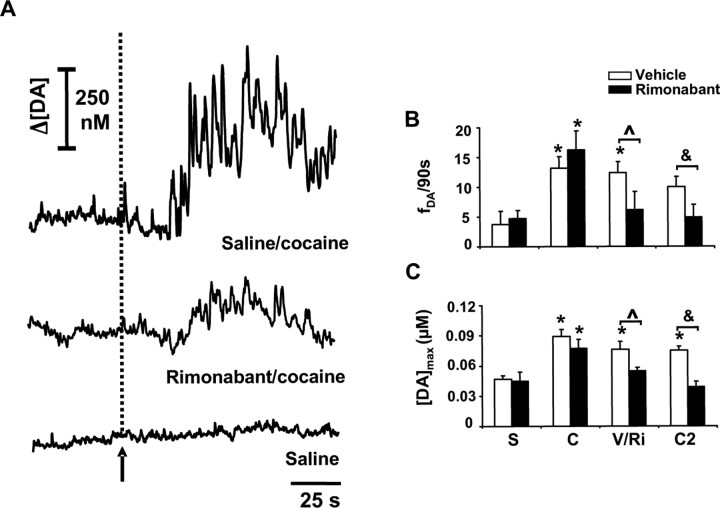Figure 1.
Endocannabinoids mediate cocaine-induced increases in subsecond dopamine release. A, Representative traces of dopamine extracellular concentration fluctuations after an injection of cocaine after saline (top), the attenuation of this response by rimonabant after a second cocaine administration (middle) in the same animal and recording location, as well as the effects of saline injection at the same site (bottom). The arrow and dashed line indicate time of drug administration. B, Pooled data of the frequency of dopamine transients (fDA) in the 4.5 min after the end of each intravenous drug infusion (animals in the control group are shown in white bars). S, Saline; C, first dose of cocaine (3 mg/kg); V/Ri, vehicle (n = 4) or rimonabant (n = 5; 0.3 mg/kg) injection 4.5 min after first dose of cocaine; C2, second dose of cocaine (3 mg/kg) given 30 min after vehicle or rimonabant (Scheffé's test, *p < 0.05 compared with saline; Bonferroni's test, ∧ p < 0.05 vehicle vs rimonabant-treated animals; Bonferroni's test, &p < 0.05 vehicle vs rimonabant-treated animals). C, Amplitude of drug-evoked dopamine transients ([DA]max). Error bars indicate SEM.

